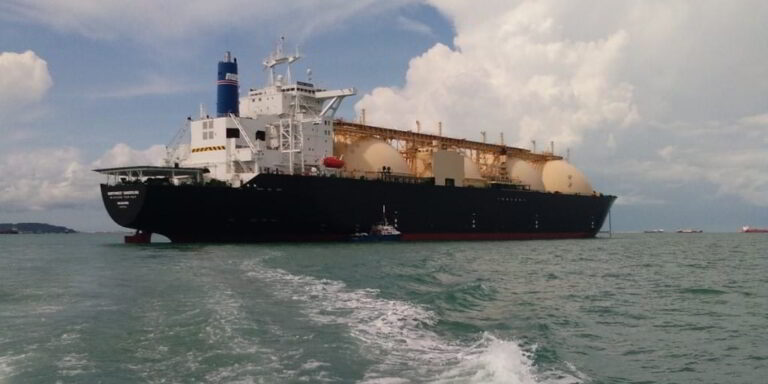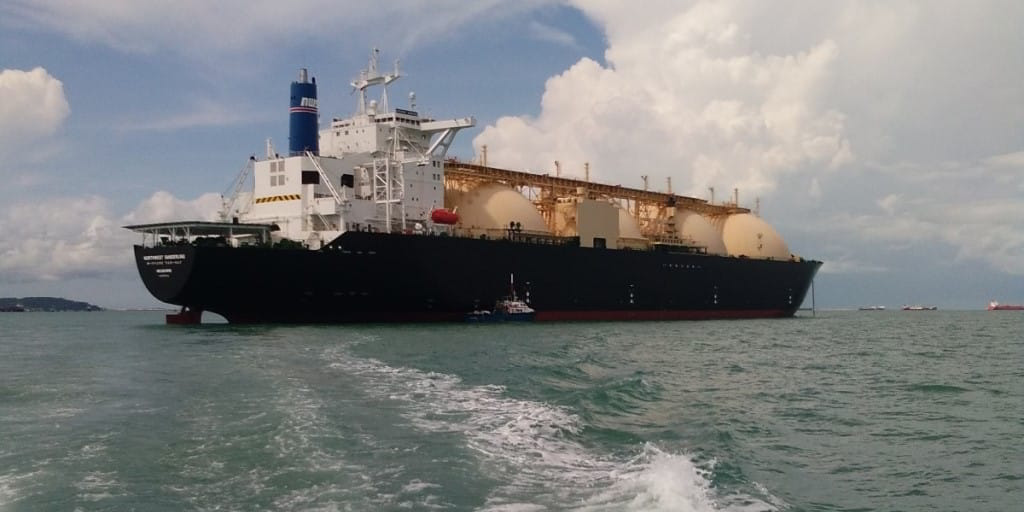EnergyQuest, an energy consultancy, has outlined its view of Australia’s gas outlook, shedding more light on what awaits the country in the future.
 Illustration; Source: Australian Energy Producers
Illustration; Source: Australian Energy Producers
EnergyQuest’s ‘LNG and energy essentials’ report indicates that the Australian government is currently considering a domestic gas reservation for the east coast market, as it is not uncommon for comparisons to be made between arrangements in the west coast market and what might be done in the east.
While emphasizing that solving potential gas shortfalls via regulation is unlikely to be easy, EnergyQuest estimates that Australia exported 6.63 Mt of LNG in July 2025, totaling 96 cargoes based on shipping data, an increase compared to June 2025, when Australia exported 6.20 Mt and 89 cargoes. On an annual level, July’s exports represent 78.1 mtpa, equivalent to 90.8% of total Australian nameplate capacity of 86 mtpa.
As a result, the firm estimates that Australian LNG export revenue in July was $5.11 billion, up from June’s $4.84 billion and marginally lower, by 1.5%, year-on-year from July 2024 when it was $5.19 billion. While WA projects earned $3.06 billion in export revenue, Queensland projects earned $1.38 billion and Northern Territory projects earned $0.67 billion.
The WA shipments have been characterized by scheduled maintenance over the past four months undertaken on Wheatstone in late April 2025, the North West Shelf (NWS) project during May with up to one train at the project offline throughout the month and into June, and Gorgon during June and into July with the equivalent of one train offline.
As a result, production and shipping volumes have been impacted, but further maintenance is also planned at NWS during late August and into September, with the equivalent of one LNG train planned to be offline during this period. The three Queensland projects will take the opportunity to undertake planned annual maintenance, with the QCLNG project having the equivalent of up to one train offline for approximately two weeks during May and into June.
The GLNG project undertook planned maintenance with up to one train being offline for approximately three weeks in June, which carried over into the first week of July. In addition, APLNG undertook scheduled maintenance during July, with up to one train being offline for approximately two weeks during the month.
Regardless of planned maintenance schedules, the projects shipped 28 cargoes for a combined total of 1.79 Mt during July, down just one cargo compared to shipping 29 cargoes for 1.91 Mt during June.
The July cargo count was the same as May, when 28 cargoes for 1.82 Mt were shipped, but shipments during these months were down due to planned maintenance outages, on the higher numbers shipped in the early part of the year, such as in April, when 31 cargoes for 2.01 Mt were sent off.
Last month, the NT, Ichthys only, shipped 12 cargoes for 0.87 Mt, which was very consistent with the project shipping 12 cargoes for 0.89 Mt in June and 12 cargoes for 0.88 Mt in May, compared to 11 cargoes for 0.82 Mt in April.

𝐓𝐚𝐤𝐞 𝐭𝐡𝐞 𝐬𝐩𝐨𝐭𝐥𝐢𝐠𝐡𝐭 𝐚𝐧𝐝 𝐚𝐧𝐜𝐡𝐨𝐫 𝐲𝐨𝐮𝐫 𝐛𝐫𝐚𝐧𝐝 𝐢𝐧 𝐭𝐡𝐞 𝐡𝐞𝐚𝐫𝐭 𝐨𝐟 𝐭𝐡𝐞 𝐨𝐟𝐟𝐬𝐡𝐨𝐫𝐞 𝐰𝐨𝐫𝐥𝐝!
𝐉𝐨𝐢𝐧 𝐮𝐬 𝐟𝐨𝐫 𝐛𝐢𝐠𝐠𝐞𝐫 𝐢𝐦𝐩𝐚𝐜𝐭 𝐚𝐧𝐝 𝐚𝐦𝐩𝐥𝐢𝐟𝐲 𝐲𝐨𝐮𝐫 𝐩𝐫𝐞𝐬𝐞𝐧𝐜𝐞 𝐢𝐧 𝐭𝐡𝐞 𝐡𝐞𝐚𝐫𝐭 𝐨𝐟 𝐭𝐡𝐞 𝐨𝐟𝐟𝐬𝐡𝐨𝐫𝐞 𝐞𝐧𝐞𝐫𝐠𝐲 𝐜𝐨𝐦𝐦𝐮𝐧𝐢𝐭𝐲!
